The popularity of infrared saunas is growing steadily, driven by markets where health and wellness are increasingly a priority. However, not everyone understands the different health benefits provided by infrared and far-infrared saunas, and which is suitable for different types of consumers.
Read on to discover the differences, as well as what the sauna market outlook looks like overall.
Table of Contents
Infrared sauna market insights
Choosing infrared saunas
Summary
Infrared sauna market insights
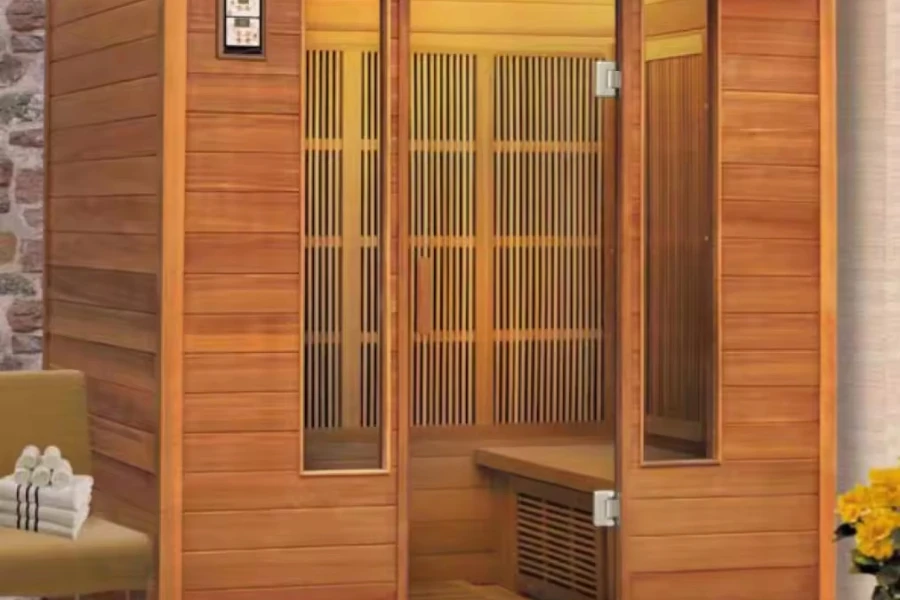
According to Digital Journal, the infrared sauna market is estimated tol reach USD 382 million by 2027, growing at a compound annual growth rate (CAGR) of 8.18% from USD 238.34 million in 2021. Likewise, the far-infrared sauna market’s value is projected to reach USD 647.14 million by 2031 at a CAGR of 7.22%, up from USD 345.57 million in 2022.

Google Ads shows that searches for infrared saunas stood at 301,000 in April 2023. This figure declined to 165,000 in August and then increased to 368,000 in February 2024 – an 18.22% growth rate.
Similarly, people searched for far-infrared saunas 8,100 times in April 2023, declining to 5,400 searches in August of the same year. This figure then rose to 8,100 again in February 2024, and averaged 6,600 monthly searches for the previous year.
Given that far-infrared saunas are more niche, it’s understandable that only some consumers would search for this specific variety. Below we’ll outline the differences between the two types.
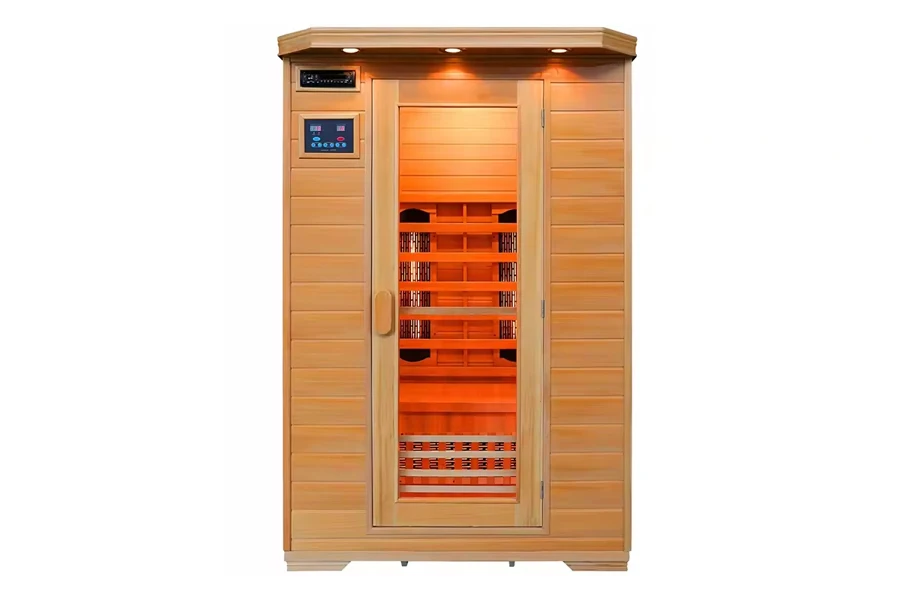
In 2024, there are a variety of saunas on the market: traditional saunas that create dry heat, steam rooms that generate moist heat, and infrared, far-infrared, and full-spectrum saunas that generate dry heat from infrared waves.
Users may also opt to invest in saunas with or without chromotherapy lighting to improve heart rate, blood flow, and skin health. Saunas are also believed to help with weight loss, pain and stress relief, and detoxification. However, it should be said that consumers with medical conditions should always seek medical advice before using a sauna as they may also have deleterious effects.
Technology advancements like remote control, monitoring, and voice control settings add to the sauna experience and are further driving market growth. Additionally, customers are increasingly seeking out portable saunas that they can use indoors and outdoors, as well as transport should they decide to move house.
Choosing infrared saunas
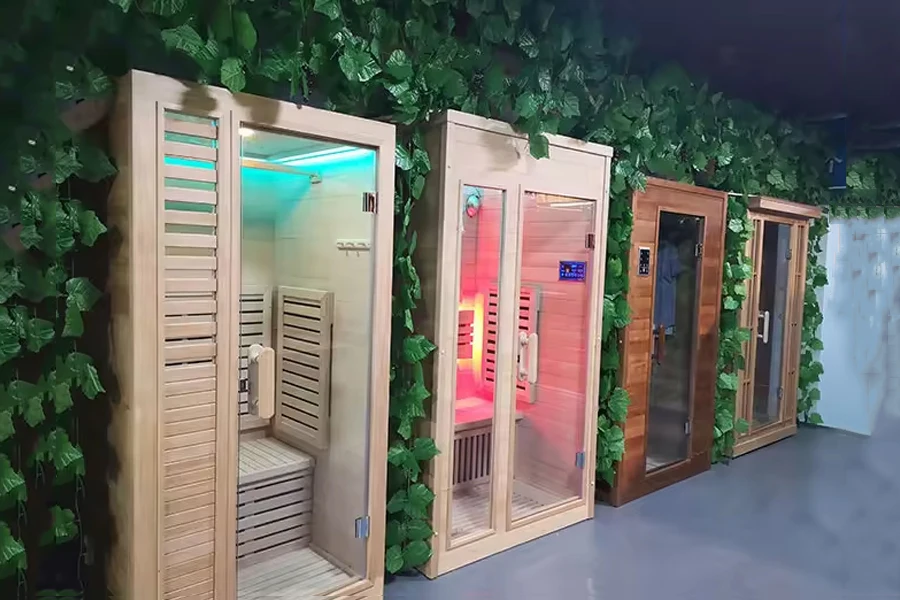
It’s important that sellers first understand the differences between near- and far-infrared wavelength saunas, their uses, and their various health benefits. Here, we’ll also cover variations in sizes, materials, applications, heaters, accessories, and safety.
Infrared, far-infrared, and full-spectrum sauna differences

Infrared or near-infrared saunas utilize shorter wavelengths than far-infrared light heaters, which doesn’t penetrate the skin’s lower layers, helping with cellular repair and pain relief.
Meanwhile, far-infrared wavelengths are longer and more generalized, penetrating deeper into the skin and tissue and aiding relaxation and detoxification. Therefore, mid- and full-spectrum infrared saunas offer similar benefits to saunas with near- and far-infrared wavelengths.
Infrared saunas also tend to be cooler than their wet sauna counterparts. For example, infrared saunas have a temperature range of 110 to 135 °F (43 to 57 °C), compared to the 160 to 194 °F (71 to 90 °C) of traditional saunas. Besides lower temperatures, the heat is also easier to control with infrared saunas thanks to their intelligent heating systems.
Sizes
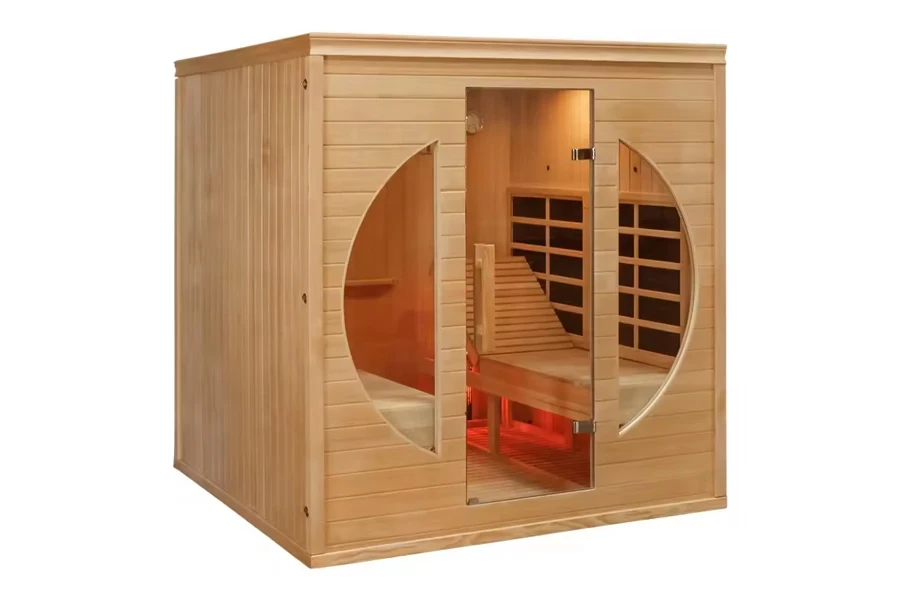
Infrared saunas come in a range of sizes, accommodating one to around 16 people or more with customization.
Materials
A sauna’s shell is typically made from hemlock, cedar, Abachi, and other woods, while the housing is often made from carbon fiber. Other materials used in the construction of saunas include stainless steel and clear tempered glass, among others.
Applications
While many infrared and far-infrared saunas are made for both indoor and outdoor use, always check with the manufacturer before advertising a product for outdoor use as some varieties of wood may not be treated or able to withstand outdoor climates.
Sauna heaters
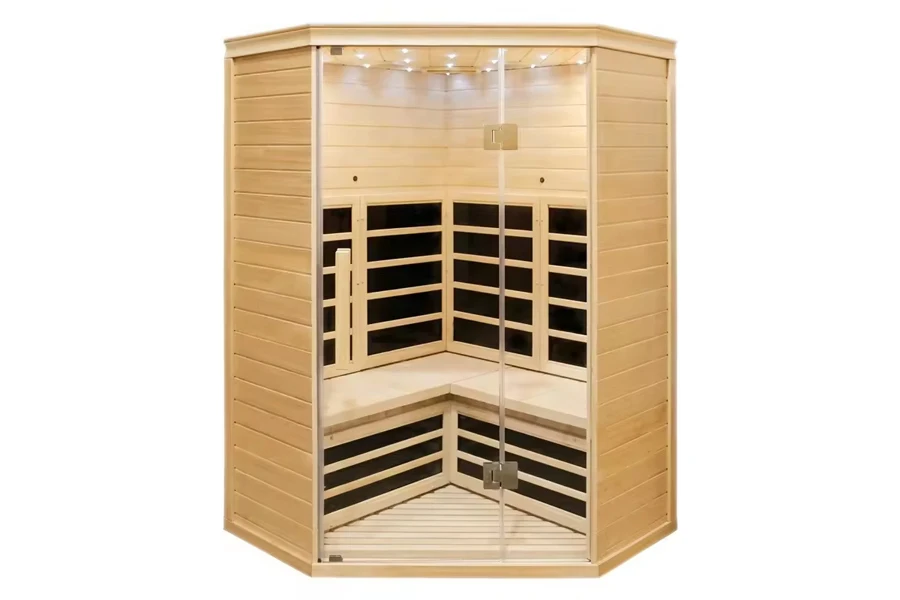
The two main types of sauna heaters are carbon and ceramic.
Carbon sauna heaters: This technology came out in about 2009, and uses softer, flexible carbon fiber panels to heat the sauna. The heat from these panels is distributed over a larger surface area than ceramic heaters, allowing the panels to produce far-infrared wavelengths at lower temperatures and providing enough heat for extended sauna sessions.
Besides operating at low temperatures, which reduces the potential of burns and injuries, these panels heat quickly, so they don’t need to operate for as long (carbon heaters have a lifespan of 50,000 to 100,000 hours). This feature saves energy and money while also safeguarding against overheating. Moreover, carbon heaters heat spaces more evenly compared with ceramic heaters, which produce more hot spots.
Ceramic sauna heaters: These are made from ceramic rods that generate near or short-infrared wavelengths. Most of these heaters use single rods with limited penetration, but manufacturers often use cone or concave-shaped heating elements to enhance heat distribution. The effect is longer wavelengths (close to 93% emissivity), with far-infrared heat penetrating deeper into the skin.
Ceramic heaters have a usage lifespan of approximately 5,000 to 10,000 hours and emissivity that is close to the far-infrared range when cone or concave-shaped. They are also safe to touch because of the low temperature of their housing.
The housing reflects 90% of the wavelengths back into the sauna space for absorption by the human body, increasing therapeutic benefits. Besides, these heaters frequently have lifelong warranties and much lower operating costs than traditional saunas.
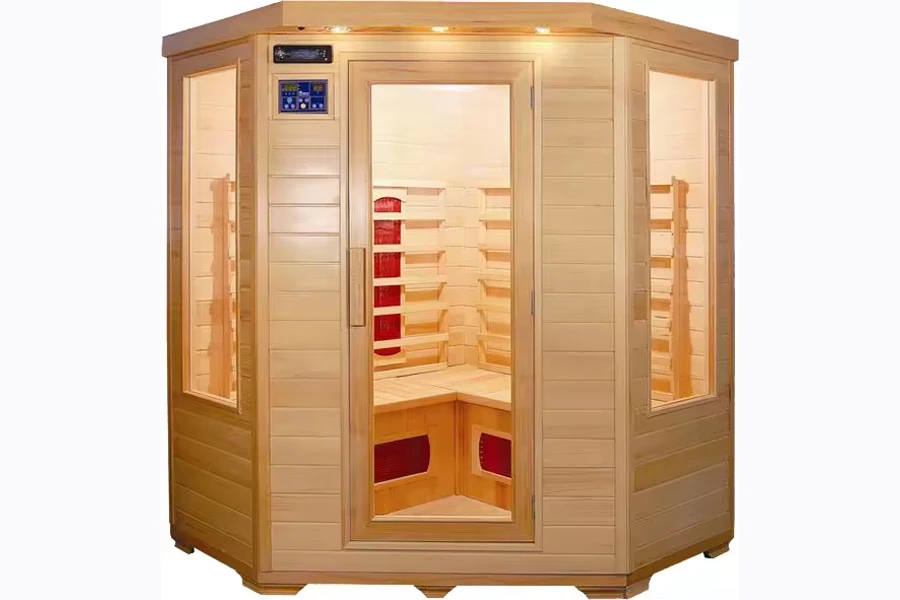
Accessories
Several popular accessories that sellers should also consider stocking alongside infrared saunas include:
- Soft touch computer control panels
- Chromotherapy lighting
- Oxygen ionizers
- CD/AM/FM stereos
- MP3/USB adapters
- LED lamps
Finally, sellers should always ask to see a sauna model’s infrared sauna certificates before purchasing. These documents prove that the products do not emit dangerous electric (ELF) and electromagnetic (EMF) fields.
Summary
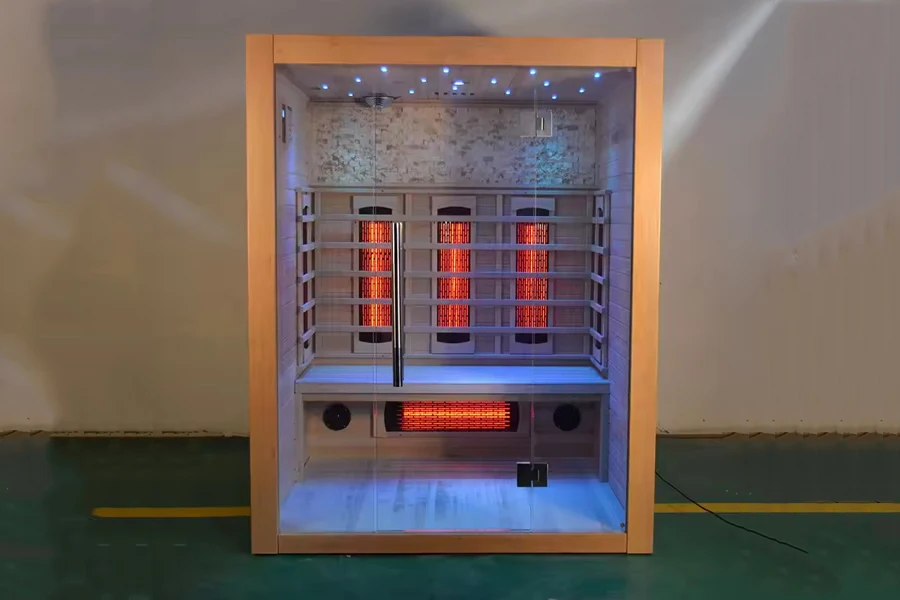
Global markets are increasingly hungry for fun and novel ways to boost wellness, and regular and infrared saunas are increasingly becoming a part of that trend. And as technology improves, infrared home saunas are becoming even more accessible for home use.
Browse Chovm.com for a huge range of infrared, far-infrared, and full-spectrum saunas for home and hospitality use.





 বাংলা
বাংলা Nederlands
Nederlands English
English Français
Français Deutsch
Deutsch हिन्दी
हिन्दी Bahasa Indonesia
Bahasa Indonesia Italiano
Italiano 日本語
日本語 한국어
한국어 Bahasa Melayu
Bahasa Melayu മലയാളം
മലയാളം پښتو
پښتو فارسی
فارسی Polski
Polski Português
Português Русский
Русский Español
Español Kiswahili
Kiswahili ไทย
ไทย Türkçe
Türkçe اردو
اردو Tiếng Việt
Tiếng Việt isiXhosa
isiXhosa Zulu
Zulu